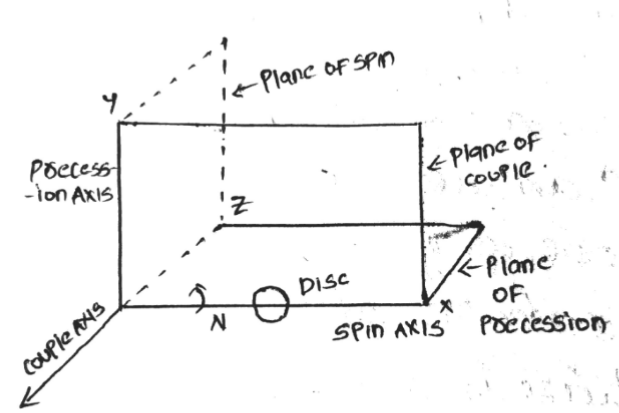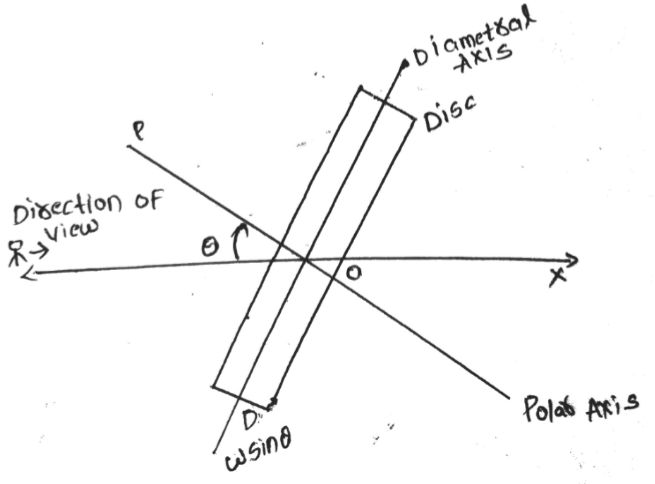what is dynamic displacement pump?
A dynamic displacement pump is a type of pump that uses the principle of dynamic displacement to move fluid. This means that the pump uses a rotating element, such as an impeller, to create a fluid flow by increasing the velocity of the fluid and then reducing the pressure to create a vacuum that draws more fluid into the pump. Dynamic displacement pumps are commonly used in industrial, agricultural, and municipal applications, and can be powered by electric motors, internal combustion engines, or other power sources. Examples include centrifugal pumps and positive displacement pumps.
Working of dynamic displacement pump?
Dynamic displacement pumps work by using a rotating element, such as an impeller, to increase the velocity of the fluid being pumped and then reducing the pressure in order to create a vacuum that draws more fluid into the pump. The impeller is typically driven by an electric motor, internal combustion engine, or other power source.
The impeller is a key component of the dynamic displacement pump. It is typically a disc or wheel with vanes or blades that are angled in such a way as to create a centrifugal force when the impeller is rotated. As the fluid enters the impeller, the vanes or blades cause the fluid to move outward, increasing its velocity.
The fluid then flows into the diffuser, which is a stationary component that surrounds the impeller. The diffuser is designed to reduce the velocity of the fluid and increase the pressure. As the fluid slows down and its pressure increases, it is then discharged from the pump and into the piping system.
At the same time, the reduction of pressure created by the diffuser causes a vacuum to be created in the inlet of the pump, drawing more fluid into the pump. This is how the pump continues to move fluid and maintain a steady flow.
Dynamic displacement pumps can be classified into two types: Centrifugal pumps and positive displacement pumps. Centrifugal pumps are widely used due to their high efficiency, wide operating range, and ability to pump large quantities of fluid. Positive displacement pumps are less efficient but are capable of pumping fluids at a steady flow rate, regardless of the pressure changes in the system.
Overall, dynamic displacement pumps are widely used in a variety of industrial, agricultural, and municipal applications because of their ability to move large quantities of fluid at a steady flow rate and maintain a relatively constant pressure.
Uses of dynamic displacement pump?
Dynamic displacement pumps are used in a wide variety of industrial, agricultural, and municipal applications. Some common uses of dynamic displacement pumps include:
- Water supply and irrigation: Dynamic displacement pumps are commonly used to pump water from wells, rivers, lakes, or other sources for use in irrigation systems, municipal water supply systems, and other applications.
- Industrial processes: Dynamic displacement pumps are used in a wide variety of industrial processes such as oil and gas production, chemical processing, power generation, mining, and many others.
- HVAC systems: Dynamic displacement pumps are used in heating, ventilation, and air conditioning systems to circulate fluids such as water, refrigerants, and other coolants through the system.
- Firefighting: Dynamic displacement pumps are used to pump water and other fire-extinguishing agents to extinguish fires.
- Marine and offshore applications: Dynamic displacement pumps are used in ships, offshore platforms, and other marine applications to pump seawater, fuel, and other fluids.
- Food and Beverage: Dynamic displacement pumps are used in food and beverage processing plants to transfer liquids, such as syrups, juices, and other ingredients.
- Waste water treatment: Dynamic displacement pumps are used to pump and transfer wastewater and sewage to treatment plants.
- Pharmaceuticals: Dynamic displacement pumps are used in pharmaceutical manufacturing processes to transfer liquids, such as cleaning solutions, disinfectants, and other chemicals.
These are a few examples of the wide range of applications where dynamic displacement pumps are used. The specific type of pump used, and its design and configuration, will vary depending on the specific application and the characteristics of the fluid being pumped.
Advantages of dynamic displacement pump?
Dynamic displacement pumps have several advantages, including:
- High flow rate: Dynamic displacement pumps are capable of pumping large quantities of fluid at a high flow rate.
- Steady flow: The pumps have the ability to maintain a steady flow rate, regardless of the pressure changes in the system.
- Wide operating range: Dynamic displacement pumps can operate over a wide range of flow rates and pressures, making them suitable for a variety of applications.
- High efficiency: Dynamic displacement pumps are highly efficient, which means they require less energy to pump a given amount of fluid than other types of pumps.
- Durable: Dynamic displacement pumps are generally durable and have a long service life, which reduces the need for frequent repairs or replacement.
- Easy maintenance: These pumps are relatively easy to maintain, which can reduce downtime and costs associated with repairs and maintenance.
- Variety of options: There are a variety of dynamic displacement pumps available, such as centrifugal pumps and positive displacement pumps, each with their own advantages for specific application.
- Versatility: Dynamic displacement pumps are widely used in a variety of industrial, agricultural, and municipal applications, making them versatile and suitable for different industries.
- Cost-effective: Due to their high efficiency, durability, and easy maintenance, dynamic displacement pumps can be cost-effective over the long term.
- Variety of power source: Dynamic displacement pumps can be powered by electric motors, internal combustion engines, or other power sources, which gives flexibility to the user to choose the power source that suits their requirements.
Disadvantages of dynamic displacement pump?
Dynamic displacement pumps also have some disadvantages, including:
- Higher initial cost: Dynamic displacement pumps can be more expensive to purchase than other types of pumps.
- Limited viscosity range: Some types of dynamic displacement pumps, such as centrifugal pumps, may not be able to handle fluids with high viscosities, such as heavy oil or molasses.
- Not suitable for low flow rate: Some types of dynamic displacement pumps, such as positive displacement pumps, may not be suitable for low flow rate applications.
- Can be noisy: Dynamic displacement pumps can be noisy during operation, which can be a problem in certain environments.
- Limited suction lift: Some types of dynamic displacement pumps, such as centrifugal pumps, have a limited suction lift and may not be able to draw fluid from a deep well or other low-pressure source.
- Not suitable for handling of abrasive fluids: Some types of dynamic displacement pumps, such as positive displacement pumps, may not be suitable for handling abrasive fluids.
- Requires regular maintenance: Dynamic displacement pumps require regular maintenance to ensure they continue to operate efficiently and prolong their service life.
- Sensitive to cavitation: Dynamic displacement pumps are sensitive to cavitation, which occurs when the liquid pressure drops below its vapor pressure, resulting in the formation of vapor bubbles. This can cause damage to the pump’s impellers and reduce its efficiency.
- Some type of dynamic displacement pump may not be self-priming, which means that the pump needs to be filled with fluid before it can start pumping and it can not run dry.
- Not suitable for handling of highly corrosive fluids: Certain types of dynamic displacement pumps may not be suitable for handling highly corrosive fluids, as the fluid may damage the internal components of the pump.
Which type of pump is dynamic pressure pumps?
Dynamic pressure pumps is not a commonly used term, but it may refer to dynamic displacement pumps which are a type of pump that uses the principle of dynamic displacement to move fluid. The term “dynamic” refers to the movement of the fluid caused by the rotation of the pump’s impeller and the “displacement” refers to the movement of fluid through the pump. Dynamic displacement pumps can be further classified into two types: Centrifugal pumps and positive displacement pumps.
Centrifugal pumps use a rotating impeller to increase the velocity of the fluid and then reduce the pressure to create a vacuum that draws more fluid into the pump.
Positive displacement pumps use a mechanism to trap a fixed amount of fluid and then move the trapped fluid through the pump, usually by using a piston or a rotating gear. These pumps are less efficient but can handle fluids with high viscosity and maintain a steady flow rate, regardless of the pressure changes in the system.
What is an example of dynamic pressure?
An example of dynamic pressure is the pressure of a fluid that is in motion, such as a liquid or gas flowing through a pipe. The dynamic pressure is caused by the movement of the fluid and is different from the static pressure, which is the pressure of a fluid that is not in motion.
For example, in a pipe carrying water, the dynamic pressure is the pressure of the water as it moves through the pipe and is affected by the velocity of the water, the density of the water, and the internal diameter of the pipe. The dynamic pressure can be calculated using the formula: Dynamic pressure = 1/2 x fluid density x velocity^2.
Another example of dynamic pressure is air pressure caused by the movement of air, as in an aircraft. The dynamic pressure is caused by the movement of the air molecules and is measured by the difference between the total pressure and the static pressure. The dynamic pressure can be calculated using the formula: Dynamic pressure = 1/2 x fluid density x velocity^2.
In both examples, the dynamic pressure is caused by the movement of the fluid, and it is different from the static pressure, which is the pressure of the fluid when it is not in motion.
What are the 3 types of special pump?
There are many types of special pumps, but some examples of three types are:
- Submersible pumps: These pumps are designed to operate while fully submerged underwater. They are commonly used for dewatering, sewage and waste water treatment, and other applications where the pump is required to operate below the water surface.
- Cryogenic pumps: These pumps are used to handle extremely low temperature fluids, such as liquid gases like liquid nitrogen or liquid helium, which are used in the chemical and petrochemical industry and in laboratories.
- Magnetic drive pumps: These pumps use a magnetic coupling to transmit power to the impeller, which eliminates the need for a direct mechanical shaft seal. This makes them ideal for use in applications where leakage of the pumped liquid would be disastrous, such as in the handling of toxic or dangerous liquids.
These are a few examples of special pumps, there are many other types of special pumps such as slurry pumps, metering pumps, vacuum pumps, etc. that are used in specific applications and industries.

